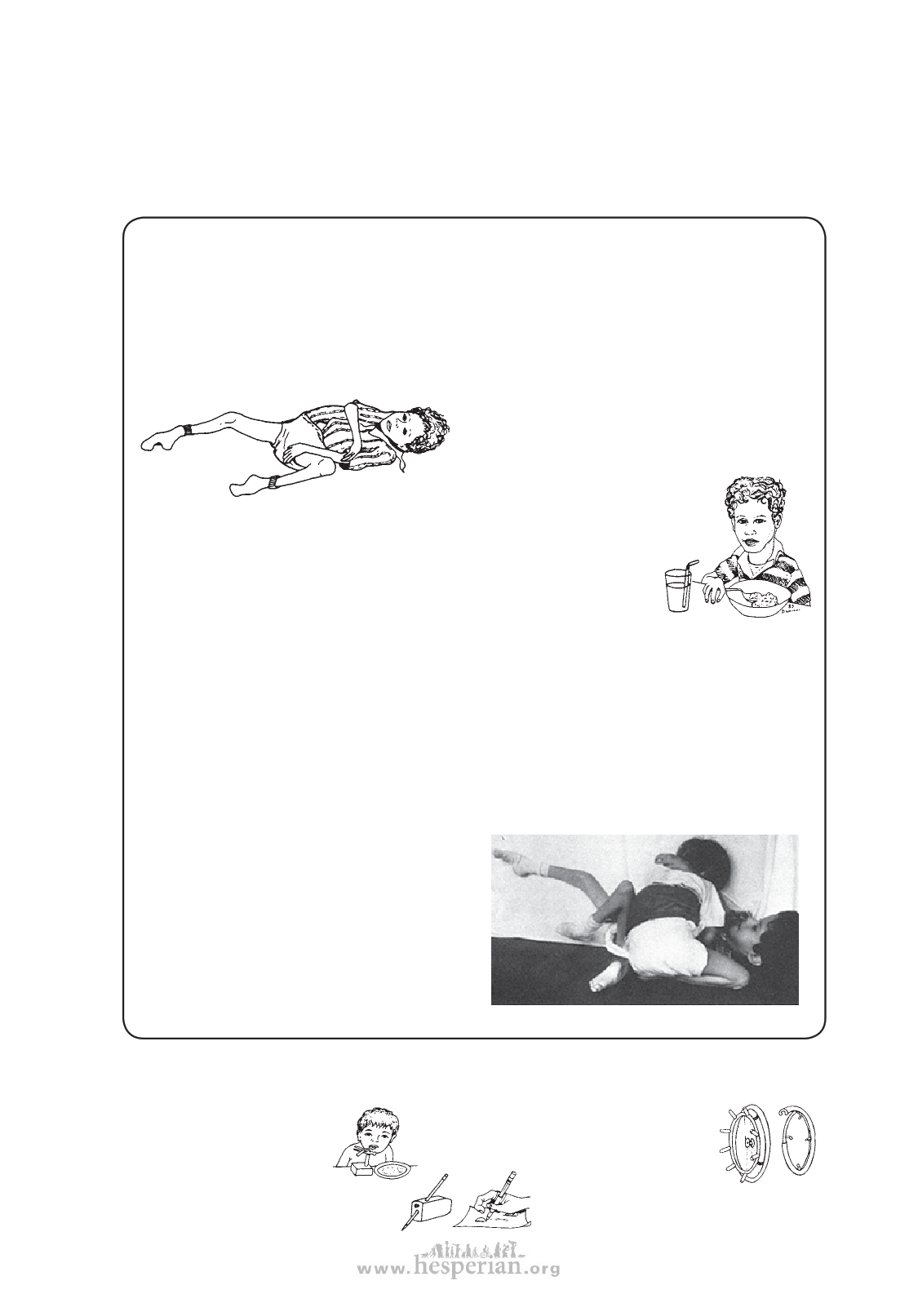
BIRTH DEFECTS
Most children with arthrogryposis are very intelligent. If given a chance, many can
learn to do a lot of things for themselves, even with severe disability. Often they try
hard and are eager to learn. It is very important that these children be encouraged
and helped to do as much as they can for themselves, and that they go to school.
The following story may help give you an idea of the possibilities of a child with
arthrogryposis.
123
SIMPLE STEPS TOWARD INDEPENDENCE—A true story
Gabriel is 7 years old. He lives with his
family in Mazatlán, Mexico. He was born
with arthrogryposis. Some of his joints are
stiff and straight, others are stiff and bent.
He lacks most of the muscles in his arms,
legs, and hands. He cannot sit alone or lift a
hand to his mouth.
Gabriel’s parents love him dearly and
care for him tenderly. However, when he
was born, doctors told them that nothing
could be done for him. So his parents grew
used to doing everything for him. As he
grew older, they carried him in their arms,
changed his diapers when he dirtied them,
and gave him food in his mouth. They
treated him like a baby—though he no
longer was one.
When his mother learned of PROJIMO,
she took Gabriel there, hoping that with
surgery or special medicine, he might
improve. The village rehabilitation workers
at PROJIMO investigated all possibilities.
They even took him to a famous hospital for
disabled children. But the specialists said
they could do nothing for Gabriel.
Now, with the help of the village
rehabilitation workers and his family, Gabriel
is able to meet some of his basic needs for
himself. He feels less like a baby and more
like a young man. He has stopped using
diapers; he asks when he needs to go to the
toilet. He has learned to use his mouth like a
hand, to hold and do things.
He has learned to feed himself. He swings
his arm onto the table using his neck muscles,
and hooks his hand
over a spoon. Using the
edge of the table and the
rim of the dish to push
against, he see-saws
the spoon to his mouth.
To drink he uses a straw
with a bend in it.
Gabriel’s family has joined Los Pargos,
an organized group of families of disabled
children. He attends school in a specially-
adapted wheelchair that he can move
himself. He is learning to read, write, paint
pictures, and to play with other children.
There is much more that Gabriel and his
family will be able to achieve, now that they
all see how much he can do for himself.
Gabriel is happy and eager to learn more.
Fortunately, therapists who were visiting
PROJIMO as instructors explained to the
team that in fact there was a lot that could
be done, not to help Gabriel walk, but to
help him do more for himself—within his
possibilities. The team began to work with
the family, to help Gabriel become more
independent.
Gabriel wrestling with another disabled child.
Various aids and adaptations can help children with arthrogryposis or similar
disabilities become more independent:
Eating aids are described
on p. 330 to 332.
Writing aids are shown on p. 5,
p. 230, and p. 501.
Wheelchair aids are
shown in Chapter 64.
disabled village children